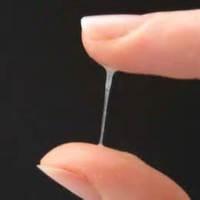 A great number of most women are usually confused as to understanding at what point they have normal vaginal discharge or abnormal vaginal discharge. At exactly what point does a discharge become unhealthy for the reproductive system? Keep in mind that vaginal discharge normally works to keep the genital area clean and healthy. However if it looks or smells badly, it might be a symptom of a health problem.
A great number of most women are usually confused as to understanding at what point they have normal vaginal discharge or abnormal vaginal discharge. At exactly what point does a discharge become unhealthy for the reproductive system? Keep in mind that vaginal discharge normally works to keep the genital area clean and healthy. However if it looks or smells badly, it might be a symptom of a health problem.
Normal vaginal discharge during menstrual cycle
It's also important to keep in mind that your menstrual cycle can influence the type of vaginal discharge you'll have on any particular day . All women produce vaginal discharge during their childbearing years, starting a year or two before puberty and ending after menopause.

Any time your ovary releases an egg in the middle of your menstrual cycle, your body will increase the production of normal vaginal discharge. It's normal to have 30 times much more vaginal discharge in the middle of the menstrual cycle. The wetness during this time is an indication that you're ovulating.
After the middle of your menstrual cycle, your vaginal discharge will begin to thicken .When you get towards the end of your menstrual cycle, close to when you start your period you'll have white discharge again. There's nothing you can do to reduce the amount of vaginal discharge or change its consistency and you would not want to anyway. This vaginal discharge is your body's way of flushing out bacteria.
Normal vaginal discharge during pregnancy
The same type of whitish discharge you may have observed early in your menstrual cycle will continue after you're pregnant. Normal whitish discharge assists in keeping the vagina neat, lubricated, and free of germs and diseases. Remember that increase in the amount of vaginal discharge will continue until delivery of your baby. A couple of weeks before your delivery date, you'll observe another increase in the level of vaginal discharge, and even at a thicker consistency. This happens as a result of the mucus plug which fills the little opening to the cervix is being discharged in preparation for labour.
You can also read: Home Remedies for Snoring
Amniotic fluid might also leak slowly in little amounts, as body system prepares for delivery. However if there's a sudden gush of fluid, get to the hospital immediately. This indicates your water broke and you'll be delivering soon. If you're not yet at 37 weeks, contact your medical doctor at once if you observe a sudden increase or change in the colour of your discharge in pregnancy, particularly if it's tinged with blood. This might be an indication of pre term labour.
You can also read: Common causes of Black Period Blood
How to know when Vaginal Discharge is not normal
Although vaginal discharge is normal in most cases, in some cases it can signify an infection.
Normal discharge is clear or whitish and doesn't have awful smell. You ought to be concerned if your vaginal discharge is yellowish, gray, green, has a clumpy texture like cottage cheese, or has an abnormal smell.
Abnormal discharge could indicate any of these conditions:
Vaginosis - Vaginal discharge that is yellowish, green, or gray could indicate vaginosis, which is a bacterial vaginal infection. An additional clue that you may possibly have this kind of infection is your vaginal discharge will have a fishy smell.
Yeast infection: A whitish coloured discharge that resembles cottage cheese is a major symptom of a yeast infection. Note you'll most likely also have severe itching and may observe some swelling around the vulva
Trichomoniasis : Vaginal discharge that gives off an intense, unpleasant smell like that of decayed eggs is normally a symptom of the sexually transmitted disease (STD) trichomoniasis. The vaginal discharge could also be frothy.
Chlamydia or gonorrhoea: If you're not pregnant or in the middle of your menstrual cycle, a sudden increase in the level of vaginal discharge could be a warning sign of one of these STDs. Chlamydia and gonorrhoea can also trigger a burning sensation whenever you pass urine.
My advice is that for you to avoid unhealthy vaginal discharge, always keep the genital area neat and dry, avoid douching, stay away from feminine hygiene products, perfumed soaps, scented tampons or pads. Consistent detox, good hygiene and practising protected sex are the most effective tips on how to keep your vaginal discharge normal and healthy. Regardless of how long you have been infected, make sure you get treated.
